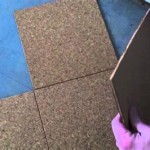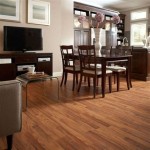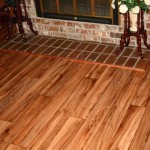Best Kitchen Flooring For Dogs: A Comprehensive Guide
Choosing the right flooring for a kitchen is a multifaceted decision, balancing aesthetics, practicality, and cost. When a dog is part of the household, however, the criteria expand significantly. The ideal kitchen flooring must withstand the unique challenges posed by canine companions. This includes resistance to scratches, spills, accidents, and the general wear and tear associated with active pets. Selecting the appropriate material can significantly impact the longevity, hygiene, and overall satisfaction with the kitchen space. This article delves into the top contenders for kitchen flooring when dogs are factored into the equation, highlighting their strengths and weaknesses, and offering guidance on making an informed choice.
Durability and Scratch Resistance
One of the foremost concerns for dog owners is the flooring's ability to withstand scratches. Dogs' nails, even when trimmed regularly, can gradually damage softer flooring materials over time. The ideal flooring should be resistant to scratching from both casual walking and more enthusiastic activities like playing or chasing toys. Different flooring types offer varying levels of scratch resistance, which is typically measured using the Aluminum Oxide Wear Layer rating (for vinyl and laminate) or through tests like the Taber Abrasion Test. Materials with higher ratings are generally more durable and better suited for households with dogs.
Hardwood flooring, while aesthetically pleasing, is generally not the most scratch-resistant option, especially softer wood species like pine or cherry. However, harder wood species such as maple, oak, and hickory offer better durability. Applying a durable finish, such as polyurethane with multiple coats, can further enhance scratch resistance. Engineered hardwood, with its multiple layers and a hardwood veneer on top, can provide some improvement in stability and dent resistance compared to solid hardwood.
Laminate flooring, consisting of a composite wood core topped with a photographic layer and a protective wear layer, can be a more scratch-resistant alternative to hardwood. The quality of the wear layer is crucial, and thicker wear layers (12mm or more) provide superior protection. Look for laminate flooring specifically marketed as pet-friendly or scratch-resistant.
Vinyl flooring, available in sheet, tile, and plank formats, is another popular choice. Luxury vinyl tile (LVT) and luxury vinyl plank (LVP) offer enhanced durability and realistic visuals that mimic wood or stone. The thickness of the wear layer is a key indicator of scratch resistance. Thicker wear layers (20 mil or more) are recommended for homes with dogs. Vinyl flooring is also inherently waterproof, a significant advantage in kitchens where spills are common.
Tile flooring, especially porcelain tile, is renowned for its exceptional durability and scratch resistance. Porcelain is fired at higher temperatures than ceramic tile, resulting in a denser and harder material. This makes it highly resistant to scratches, stains, and water damage. The Porcelain Enamel Institute (PEI) rating indicates the tile's abrasion resistance; a rating of 3 or higher is recommended for kitchen use.
Concrete flooring, when properly sealed and finished, can also be a durable option. It is resistant to scratches and staining, and can be customized with various colors and finishes. However, concrete can be cold and hard underfoot, which may not be ideal for all dog breeds, especially those prone to joint issues. Adding rugs or mats can provide cushioning and warmth.
Water Resistance and Cleanability
Beyond scratch resistance, water resistance is a critical factor in kitchen flooring, especially considering potential accidents or spills from water bowls. The flooring should be able to withstand moisture without warping, staining, or developing mold or mildew. Cleanability is equally important, as dog owners will likely need to clean up messes quickly and efficiently.
Hardwood flooring, particularly solid hardwood, is susceptible to water damage. Moisture can cause warping, cupping, and swelling. While engineered hardwood offers improved stability, it is still not completely waterproof. Spills should be cleaned up immediately to prevent damage. Regular sealing and proper maintenance are essential to protect hardwood flooring in the kitchen.
Laminate flooring typically has a water-resistant surface, but the seams between planks can be vulnerable to moisture penetration. Some laminate flooring is now available with waterproof cores and tight locking systems, providing enhanced protection against spills. However, it is still advisable to clean up spills promptly to prevent any potential damage.
Vinyl flooring is inherently waterproof, making it an excellent choice for kitchens with dogs. Sheet vinyl provides a seamless surface, eliminating the risk of water seeping through seams. LVT and LVP, with their waterproof cores and tight interlocking systems, offer similar protection. Vinyl flooring is also easy to clean, requiring only regular sweeping and mopping.
Tile flooring, especially porcelain tile, is virtually impervious to water damage. The dense, non-porous surface prevents water from penetrating, making it highly resistant to stains and mold growth. Tile is also easy to clean and maintain, requiring only occasional mopping with a mild detergent. Grout lines, however, can be susceptible to staining and may require periodic sealing.
Concrete flooring, when properly sealed, is resistant to water damage. Applying a sealant creates a barrier that prevents water from penetrating the porous surface. However, concrete can still stain if spills are not cleaned up promptly. Regular sealing is necessary to maintain its water resistance and prevent staining.
Comfort and Safety for Dogs
While durability and water resistance are essential, the comfort and safety of the dog should also be considered when selecting kitchen flooring. The flooring should provide adequate traction to prevent slipping and falls, and it should not be excessively hard or cold, which can be uncomfortable for dogs, especially those with joint issues. Providing adequate comfort becomes increasingly crucial for senior dogs.
Hardwood flooring, while not the most durable, can be relatively comfortable for dogs. The smooth surface provides good traction, and it is generally warmer than tile or concrete. However, it is important to keep the floors clean to prevent slipping, especially for dogs with long hair or those prone to shedding.
Laminate flooring can be similar to hardwood in terms of comfort and traction, depending on the surface texture. Embossed laminate flooring, with a textured surface that mimics the grain of wood, can provide better traction. However, it is still important to keep the floors clean and dry to prevent slipping.
Vinyl flooring, particularly LVT and LVP with textured surfaces, can offer good traction and comfort for dogs. The resilient surface provides some cushioning, and it is generally warmer than tile or concrete. However, smooth sheet vinyl can be slippery, so it is important to choose a textured option.
Tile flooring can be hard and cold, which may not be ideal for all dogs. Some dogs may find it uncomfortable to lie on tile for extended periods. Adding rugs or mats can provide cushioning and warmth. Textured tile, with a slightly rough surface, can improve traction and prevent slipping.
Concrete flooring, while durable and stylish, is generally the least comfortable option for dogs. The hard, cold surface can be uncomfortable for extended periods. Adding rugs or mats is essential to provide cushioning and warmth. A sealed concrete floor can be slippery, so consider adding a non-slip additive to the sealant.
Beyond the flooring material itself, regular cleaning is crucial for maintaining a safe and comfortable environment for dogs. Food spills, urine, and other messes can create slippery spots and attract bacteria. Using pet-friendly cleaning products and ensuring that the floors are thoroughly dried after cleaning can help prevent accidents and maintain hygiene. Furthermore, regular nail trimming can minimize scratching and prevent dogs from slipping due to overgrown nails.
In conclusion, the optimal kitchen flooring for households with dogs represents a careful balance between durability, water resistance, cleanability, and comfort. Each flooring material presents its own set of advantages and disadvantages, and the final decision should be based on individual needs and priorities. By considering these factors, dog owners can select a flooring that meets the demands of a busy kitchen while providing a safe and comfortable environment for their canine companions.

Pet Friendly Flooring Guide

How To Choose The Best Flooring For Dogs Home Depot

How To Choose The Best Flooring For Dogs Home Depot

Pet Friendly Flooring Guide

How To Choose The Best Flooring For Dogs Home Depot

How To Choose The Best Flooring For Dogs Home Depot

How To Choose The Best Flooring For Dogs Home Depot

Pros And Cons Of Flooring Types For Dogs Floors Paws

What S The Best Flooring For Dogs Inc

Best Flooring For Dogs Everything You Need To Know Vetstreet
Related Posts








